To install a fireplace, first, choose a suitable location. Then, secure the necessary permits, prepare the area, install the firebox, chimney, and flue, and finally, connect the gas or install the electrical components.
Fireplaces add warmth and ambiance to any home. Whether you prefer a traditional fireplace, an electric fireplace, or a gas fireplace, the installation process generally involves a few key steps. By following these steps carefully and adhering to safety guidelines, you can enjoy the cozy atmosphere that a fireplace brings.
We will provide a step-by-step guide to help you install a fireplace in your home.
Understanding The Basics Of Fire Place Installation
Installing a fireplace in your home not only adds warmth and a cozy ambiance, but it can also increase the value of your property. However, before you embark on this project, it is important to understand the basics of fireplace installation. From choosing the right type of fireplace to ensuring safety precautions are taken, this guide will walk you through everything you need to know.
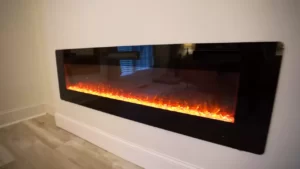
Types of Fire Places to Consider
When it comes to fire place installation, there are several types of fire places to consider. Each type has its own unique characteristics and installation requirements. Here are some popular options:
- Wood-burning fire places: These traditional fire places are known for their classic charm and crackling sounds. They require a flue or chimney to vent the smoke.
- Gas fire places: Gas fire places offer convenience and instant warmth. They can be vented or ventless, depending on your preference.
- Electric fire places: Electric fire places are ideal for those who want the ambiance of a fire place without the need for a flue or chimney. They are easy to install and operate.
Safety Precautions to Take Before Installation
Prior to starting the installation process, it is crucial to prioritize safety. Here are some important safety precautions to keep in mind:
- Consult a professional: It is highly recommended to seek the assistance of a professional fire place installer. They have the expertise and knowledge to ensure a safe and efficient installation.
- Check local building codes: Familiarize yourself with the building codes and regulations in your area. This will ensure that your fire place installation complies with the necessary safety standards.
- Clearances: Maintain proper clearances around the fire place to prevent any fire hazards. These clearances should be in accordance with the manufacturer’s guidelines.
- Carbon monoxide detector: Install a carbon monoxide detector near the fire place to detect any potential leaks and ensure the safety of your home.
- Fire extinguisher: Keep a fire extinguisher nearby in case of emergencies. Ensure it is easily accessible and in good working condition.
By understanding the basics of fire place installation and following the necessary safety precautions, you can enjoy a warm and inviting fire place in your home. Whether you choose a wood-burning, gas, or electric fire place, always prioritize safety for a worry-free experience.
Preparing For Fire Place Installation
Installing a fire place is a wonderful way to add warmth and charm to your home. Before you jump into the installation process, it’s important to properly prepare for it. This step is crucial as it will ensure a smooth and successful installation. In this section, we will discuss the key steps involved in preparing for fire place installation, including measuring and assessing the space, choosing the right location, and assembling the necessary tools and materials.
Measuring and Assessing the Space
Measuring and assessing the space where you plan to install your fire place is the first step in the preparation process. This will help you determine the size and type of fire place that will fit best in your home. To accurately measure the space, grab a tape measure and measure the width, height, and depth of the area. Take note of any obstacles or restrictions that may affect the installation, such as windows, doors, or vents. It’s important to assess the condition of your walls and flooring as well, as any repairs or modifications may be needed before installation can take place.
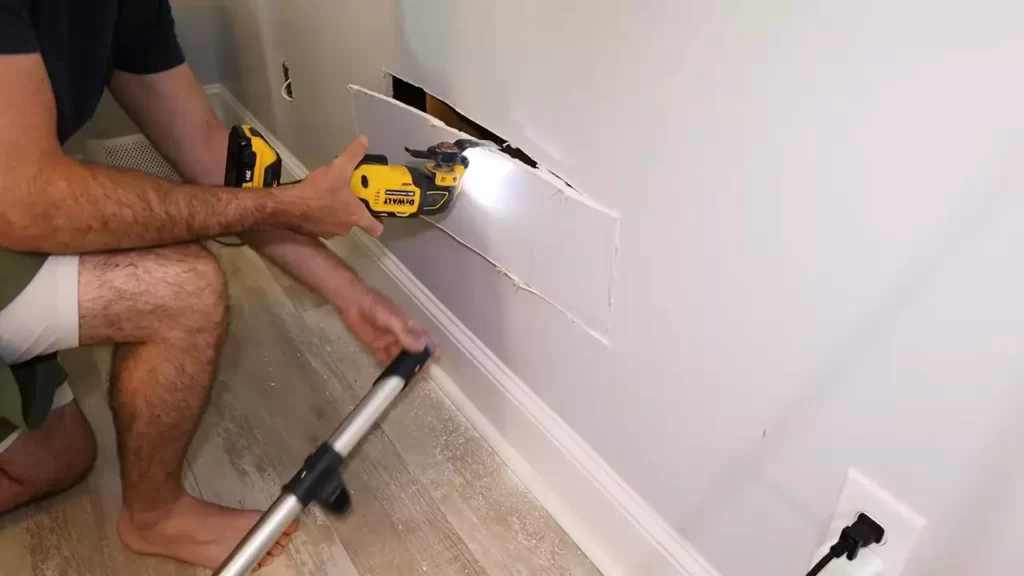
Choosing the Right Location for Your Fire Place
Choosing the right location for your fire place is crucial for optimal performance and aesthetics. Consider factors such as the existing layout of your home, traffic flow, and accessibility. It’s also important to think about safety, ensuring that your fire place is installed away from flammable materials. Additionally, take into account the ventilation requirements of your fire place and make sure there is enough space for proper airflow. By carefully selecting the location, you can create a focal point that enhances both the functionality and beauty of your home.
Assembling the Necessary Tools and Materials
Before you begin the installation process, make sure you have all the necessary tools and materials on hand. This will save you time and prevent any interruptions during the installation. The specific tools and materials required will depend on the type of fire place you are installing, so refer to the manufacturer’s instructions or consult with a professional for guidance. Some common tools and materials you may need include a drill, level, screwdriver, studs or anchors, venting components, insulation, and fire bricks. Having everything ready in advance will make the installation process much smoother and more efficient.
Preparing for fire place installation may seem like a daunting task, but by following these steps and being well-prepared, you can ensure a successful and hassle-free installation. Measure and assess the space, choose the right location, and gather all the necessary tools and materials. Once you have completed these preparations, you will be ready to move on to the next exciting step of installing your fire place.
Step 1: Clearing The Area And Ensuring Proper Ventilation
Installing a fire place can be an excellent addition to your home, creating a cozy and inviting atmosphere. However, before you begin the installation process, it is important to ensure that the area is clear and that proper ventilation is in place. This step is crucial to guarantee the safety and efficiency of your fire place. In this article, we will guide you through Step 1: Clearing the Area and Ensuring Proper Ventilation with two important subheadings: Removing Furniture and Obstacles and Checking for Adequate Air Circulation.
Removing Furniture and Obstacles
To install a fire place successfully, you need to start by clearing the area. This means removing any furniture, decor, or other obstacles in the vicinity of where the fire place will be installed. It is important to make sure that there is enough space for the fire place to be placed securely and that there are no obstructions that could potentially obstruct the flow of heat.
Here are some key steps to follow when removing furniture and obstacles:
- Measure the space: Before moving any furniture, measure the dimensions of the area where the fire place will be installed. This will help you determine whether any furniture needs to be rearranged or temporarily removed.
- Clear the area: Remove all furniture, decor, rugs, and any other objects that are in the way. Ensure that there is enough space for the fire place and that there are no flammable materials nearby that could pose a safety risk.
- Secure fragile items: If there are fragile items or delicate decor pieces nearby, make sure to store them in a safe place to avoid any damage during the installation process.
By clearing the area effectively, you will create a safe and open space for the fire place, allowing it to operate efficiently and without any obstruction.
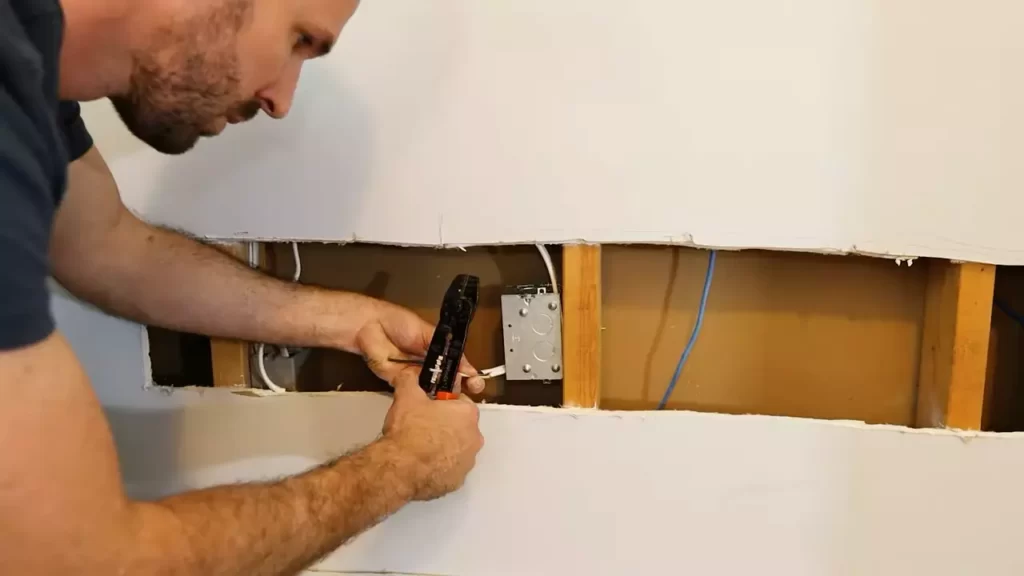
Checking for Adequate Air Circulation
Proper ventilation is essential when installing a fire place. Without adequate air circulation, the fire place may not function efficiently, and there could be a higher risk of carbon monoxide buildup. Before proceeding with the installation, you should check if there is adequate air circulation in the designated area.
Here’s how you can ensure sufficient air circulation:
- Inspect existing vents: Check if there are any existing vents or ventilation systems in the area where the fire place will be installed. Make sure they are not blocked or obstructed by any furniture or objects.
- Install ventilation if needed: If there are no existing vents or if the current ventilation is inadequate, consider installing a ventilation system specifically designed for fire places. This will help maintain proper air flow and ensure the efficient operation of your fire place.
- Keep curtains and drapes away: Make sure that curtains, drapes, or any other window coverings are not obstructing the flow of air. Keep them away from the fire place area to allow proper circulation.
Ensuring adequate air circulation is crucial for the safety and efficiency of your fire place. Proper ventilation will prevent the buildup of harmful gases and maintain a pleasant indoor environment.
By following these steps and adhering to proper clearance and ventilation guidelines, you are now ready to proceed with the installation of your fire place. In the next step, we will guide you on how to prepare the installation site and gather the necessary tools and materials. Stay tuned!
Step 2: Installing The Fire Place Insert Or Unit
Once you have thoroughly inspected and prepared the area for your fire place insert or unit, it’s time to move on to the installation process. This step will involve two important tasks: inspecting and preparing the fire place insert/unit, and venting the fire place and connecting the flue pipe. Let’s take a closer look at each of these tasks.
Inspecting and Preparing the Fire Place Insert/Unit
Before installing the fire place insert or unit, it is crucial to inspect it for any potential damage or defects. Here are the steps to follow:
- Carefully unpack the fire place insert/unit and examine it for any visible signs of damage, such as cracks or dents.
- Inspect the components of the fire place insert/unit, including the glass doors, baffles, and logs, to ensure they are in good condition and functioning properly.
- Check the installation manual provided by the manufacturer for any specific instructions or precautions related to your particular fire place insert/unit model.
- Prepare the fire place by cleaning and removing any debris or obstacles that may hinder the proper installation of the insert/unit.
- Ensure that the fire place is level by using a spirit level. This will help ensure the insert/unit is installed correctly and prevent any potential issues in the future.
By carefully inspecting and preparing the fire place insert/unit, you can ensure its proper functionality and longevity.
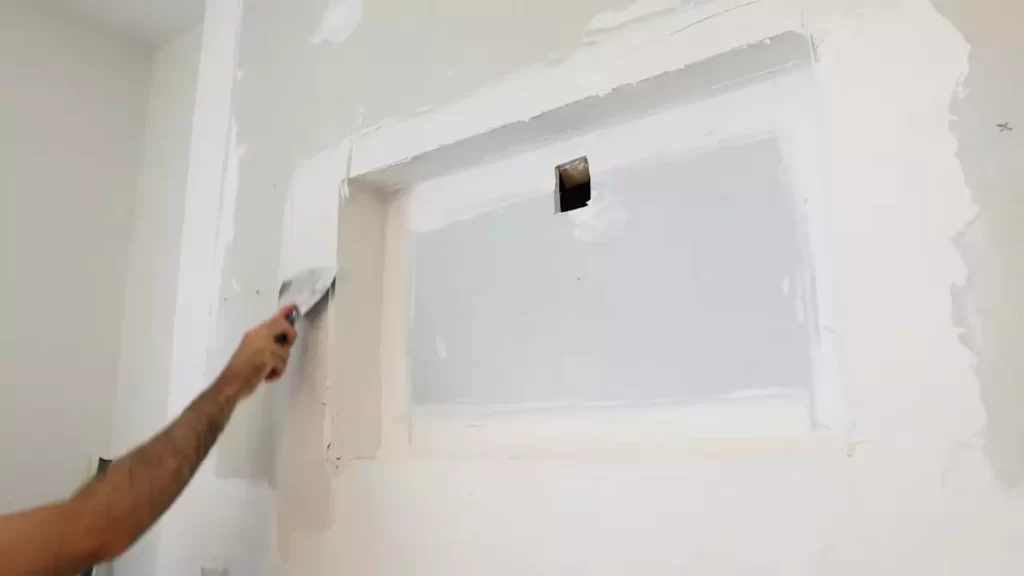
Venting the Fire Place and Connecting the Flue Pipe
Proper venting is crucial for the safe operation of your fire place. Here’s what you need to do to vent the fire place and connect the flue pipe:
- Determine the best location for the flue pipe, ensuring it meets the necessary clearance requirements.
- Measure and cut a hole in the fire place wall or chimney to accommodate the flue pipe.
- Attach the thimble or collar to the hole, securing it tightly to create a proper seal.
- Connect the flue pipe to the collar, ensuring a secure fit. Use appropriate connectors and seals as specified by the manufacturer.
- Install the chimney cap or termination unit at the top of the flue pipe to prevent rain, debris, and animals from entering.
- Check the installation for any gaps or leaks, and make necessary adjustments to ensure a proper seal.
By venting the fire place and connecting the flue pipe correctly, you can ensure the efficient functioning of your fire place and minimize the risk of any potential hazards.
Once you have completed these tasks, you can proceed to the next step of installing the fire place, which involves connecting any necessary gas or electrical lines and securing the unit in place. Stay tuned for our next blog post in this series to learn more about this final step!
Step 3: Building The Fire Place Surround
Selecting Suitable Materials for the Surround
When it comes to building the fireplace surround, the first step is to select suitable materials that will not only withstand the heat but also enhance the aesthetic appeal of your living space. While there are various options available, it’s important to choose materials that are durable, easy to work with, and align with your personal style and budget.
One popular choice for fireplace surrounds is brick. Bricks are not only heat-resistant, but they also provide a classic and timeless look. Moreover, they can be easily laid in different patterns to create a unique design. If you prefer a more modern and sleek appearance, you may consider using tiles or stones. These materials offer versatility in terms of colors, textures, and patterns, allowing you to achieve the desired look for your fireplace surround.
To make an informed decision, take into consideration factors such as maintenance requirements, cost, and the overall style and theme of your home. Remember, the chosen material will play a significant role in determining the final outcome of your fireplace surround.
Constructing the Surround and Mantel
Once you have selected the materials for your fireplace surround, it’s time to start constructing it. This step involves careful planning, measurement, and precise execution to ensure a sturdy and visually appealing result.
Begin by measuring the dimensions of your fireplace opening. This will help you determine the amount of material you need and guide you in cutting it to the right size. Whether you choose to work with bricks, tiles, or stones, make sure to follow the manufacturer’s instructions and recommended installation techniques.
If you opt for bricks, ensure that you use a mortar mixture that is specifically designed for this purpose. Apply the mortar evenly between each brick, creating a solid and secure structure. In the case of tiles or stones, use an adhesive suitable for the material and apply it using a trowel or a recommended tool.
As you construct the surround, you can incorporate a mantel above the fireplace that adds functionality and style. The mantel can be built using the same material as the surround or a complementary one. It provides a ledge for decorative items and a cozy space to display photographs, artwork, or seasonal decorations.
Finally, allow sufficient time for the construction materials to set and dry before using the fireplace. Regularly inspect and maintain the surround to ensure its longevity and visual appeal.
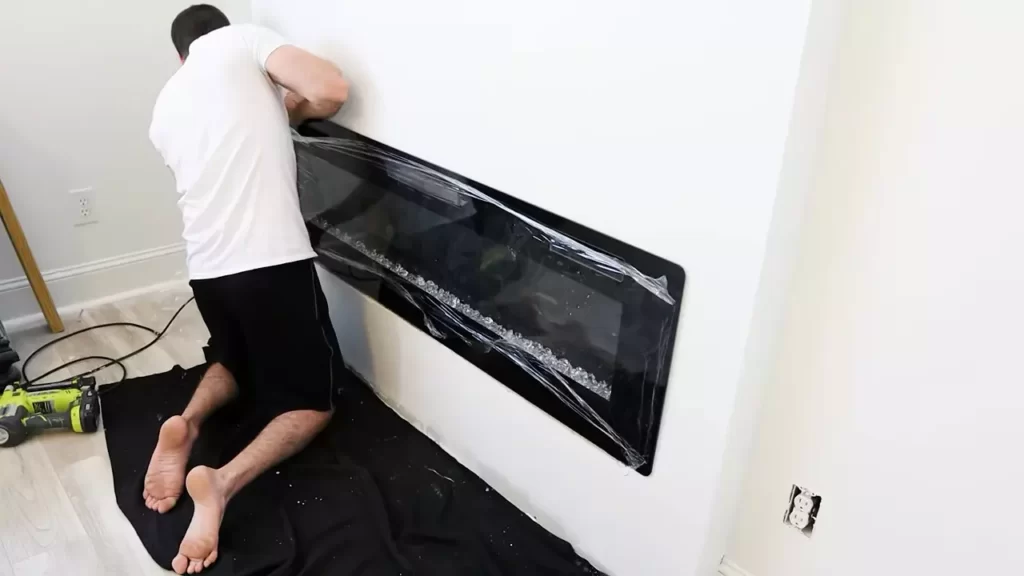
Step 4: Adding Finishing Touches
Once you have installed your fire place and ensured it is functioning properly, it is time to add those final, aesthetic finishing touches that will truly make your fireplace a statement piece in your home. In this step, we will cover two important aspects of adding the finishing touches: painting or staining the surround, and installing decorative elements such as a hearth or surround trim.
Painting or Staining the Surround
One of the most impactful ways to customize the look of your fire place is by painting or staining the surround. This involves choosing a color or finish that complements your overall decor and personal style. Here are the steps to paint or stain the surround:
- Remove any dust or debris from the surface of the surround using a clean, dry cloth.
- Protect the surrounding areas by covering them with plastic sheeting or painter’s tape.
- Apply a primer to the surface to ensure proper adhesion of the paint or stain.
- Once the primer is dry, apply the paint or stain using a brush or roller, following the manufacturer’s instructions.
- Allow the first coat to dry thoroughly and then apply a second coat if necessary.
- Once the paint or stain is completely dry, remove the protective covering and clean up any drips or spills.
Remember to choose a paint or stain that is specifically formulated for fire places, as these products are designed to withstand high temperatures and provide long-lasting durability.
Installing Decorative Elements, such as a Hearth or Surround Trim
To add an extra touch of elegance to your fire place, consider installing decorative elements such as a hearth or surround trim. These elements not only enhance the visual appeal of your fire place but also provide a practical function by protecting the surrounding area from heat and sparks. Here are the steps to install these decorative elements:
- Measure the dimensions of the area where you plan to install the hearth or surround trim.
- Choose the material for your hearth or surround trim, such as marble, stone, or wood, based on your personal preference and the overall style of your fireplace.
- Cut the material to the appropriate size using a saw or other cutting tools, ensuring precise measurements.
- If necessary, sand the edges of the material to achieve a smooth and professional finish.
- Apply adhesive or mortar to the back of the material and carefully position it in place, pressing firmly to ensure proper adhesion.
- Allow the adhesive or mortar to dry completely before using the fire place.
By following these steps, you can easily transform your fire place into a stunning focal point in your home. Take the time to select the right color, finish, and decorative elements that reflect your personal style and create a cozy and inviting atmosphere in your living space.
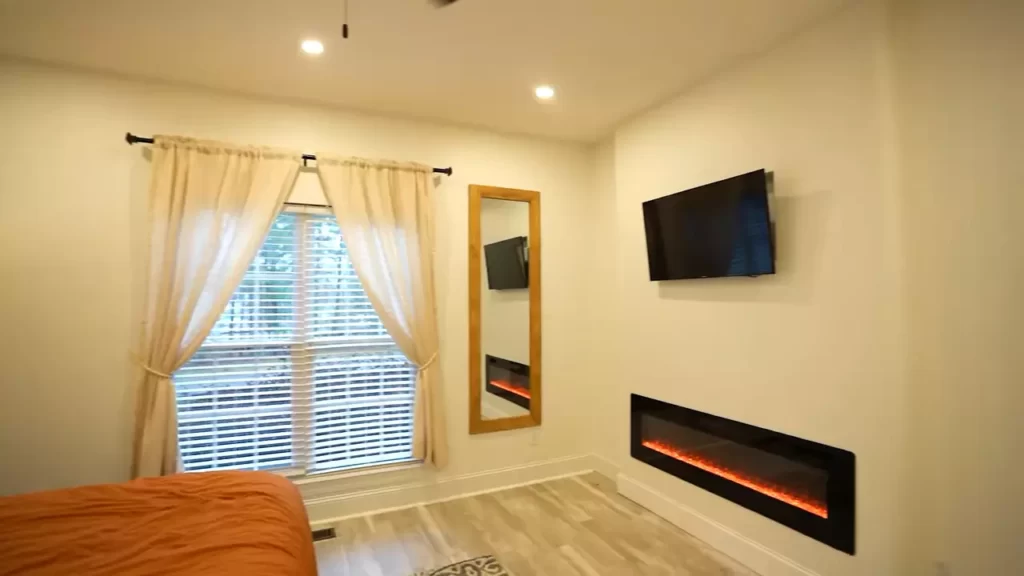
Step 5: Testing And Safety Precautions
Ensuring Proper Functionality of the Fire Place
After successfully completing the installation process, it’s crucial to ensure the proper functionality of your fire place. Follow these steps to make sure everything is in working order:
- Check the Ventilation: Ensure that the ventilation system is properly connected and functioning. A blocked or inadequate ventilation can lead to a buildup of toxic gases like carbon monoxide, posing a serious risk to your health.
- Inspect the Chimney: Carefully examine the chimney to check for any signs of damage such as cracks or obstructions. Also, confirm that the chimney cap is securely in place to prevent debris from entering.
- Test the Ignition and Fuel Supply: Test the ignition system to confirm that it is working effectively. Additionally, ensure that the fuel supply, whether it’s gas, wood, or pellets, is sufficient and functional. For gas fireplaces, check for any gas leaks by using a soapy water solution on the gas connections, watching for any bubbles that form.
- Verify Thermostat and Controls: Test the thermostat and controls to ascertain their accuracy and responsiveness. Ensure that they are properly calibrated and able to regulate the temperature effectively.
- Examine the Firebox and Flue: Carefully inspect the firebox for any cracks or loose bricks. Furthermore, examine the flue to ensure it is clean and not obstructed, which can hinder smooth airflow and lead to potential ventilation issues.
- Test the Blower: If your fire place is equipped with a blower, ensure that it is working correctly by turning it on and checking if the airflow is consistently blowing in the desired direction.
Following Fire Safety Guidelines and Maintenance Tips
It’s essential to prioritize safety when it comes to operating your fire place. Follow these fire safety guidelines and maintenance tips to prevent accidents and keep your fire place in optimal condition:
- Keep a Fire Extinguisher Handy: Make sure to have a fire extinguisher readily accessible near your fire place. Familiarize yourself with its proper usage and placement, ensuring it is in good working condition.
- Dispose of Ashes Properly: Allow ashes to cool completely before removing them from the fire place. Place them in a metal container with a lid and store them away from flammable materials. Remember, hot ashes can pose a fire hazard.
- Regularly Clean the Fire Place: Clean the fire place regularly to remove ash, soot, and debris that can accumulate over time. This helps maintain optimal functionality and prevent the buildup of potentially flammable materials.
- Observe Clearances: Adhere to the recommended clearances outlined in the manufacturer’s instructions. Keep flammable objects, such as furniture, curtains, and rugs, at a safe distance from the fireplace.
- Install a Carbon Monoxide Detector: Carbon monoxide is odorless and lethal. Install a carbon monoxide detector near your fireplace to promptly alert you in case of a gas leak or inadequate ventilation.
- Inspect and Maintain Regularly: Schedule regular inspections and maintenance check-ups to identify any potential issues and address them promptly. Consult a professional, if needed, for a thorough assessment.
Remember, maintaining a safe and well-functioning fireplace requires ongoing attention and care. By adhering to these testing and safety precautions, you can enjoy the cozy warmth and ambiance of your fireplace with peace of mind.
Frequently Asked Questions Of How To Install Fire Place
Can You Install A Fireplace Yourself?
Yes, you can install a fireplace yourself. However, it’s important to note that fireplace installation can be complex and requires careful attention to safety. Make sure to follow manufacturer instructions, obtain necessary permits, and consult experts if needed. Always prioritize safety when undertaking DIY fireplace installation.
Can You Install A Fireplace Without A Chimney?
Yes, it is possible to install a fireplace without a chimney. Ventless or electric fireplaces can be used as alternative options. These types of fireplaces don’t require a chimney because they release clean combustion gases or operate without any venting at all.
Does Fireplace Add Value To Home?
Yes, a fireplace can add value to your home. It is desirable to many buyers and can increase the overall appeal and selling price of a property.
What Is The Cheapest Way To Install A Fireplace?
The most cost-effective way to install a fireplace is by opting for a prefabricated or electric model. These options require minimal construction work and are more budget-friendly compared to traditional wood-burning or gas fireplaces.
Conclusion
Installing a fireplace can transform your living space into a cozy and inviting retreat. By following the step-by-step guide outlined in this blog post, you can successfully install a fire place in your home. From gathering the necessary tools to ensuring proper ventilation, each stage has been carefully explained.
Create a warm and soothing ambiance in your home with a beautifully installed fire place.
